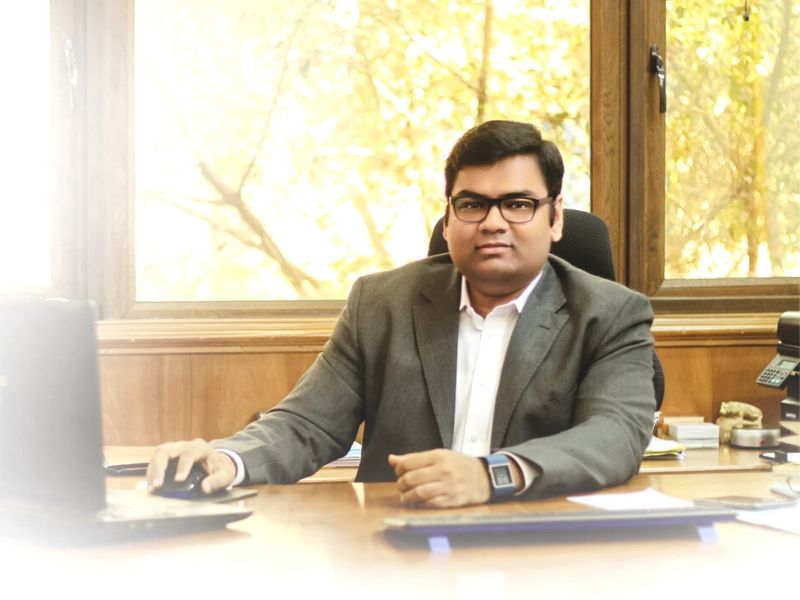Education for All (EFA) is a term popularly associated with the global initiative launched in 1990 by UNESCO, World Bank Group, national governments, and civil society groups. The aim of EFA was to meet the learning needs of all children, youth and adults by 2015. Unfortunately, EFA failed to realise its goals in the given timeline. So, a new target was set which is now known as Sustainable Development Goal 4 (SDG 4) – Education 2030 to ensure inclusive and equitable quality education and promote lifelong opportunities for all by 2030.
India is an integral part of this movement, given that it is home to the world’s largest population in the age bracket 5-24 years and has the third-largest higher education system after the United States and China. According to All India Survey on Higher Education Report 2018-19 of the Ministry of Human Resource Development of India:
-
- Gross enrolment ratio in higher education institutes is merely 26.3 percent.
- There are only 16 universities exclusively for women.
- College density – number of colleges per lakh eligible population varies between 7 and 53 across states as against the national average of 28.
On the other hand, ‘Unemployment in India – A Statistical Profile’ report for May-Aug 2019 by the Centre for Monitoring India Economy reveals that unemployment among graduates and above is 15 percent, double the national average and thrice the global average.
These figures indicate that the Indian higher education system has been unable to realise its potential, both in terms of quality and quantity.
Challenges
- A vast majority of the University Grants Commission (UGC) budget goes in the kitty of the central university and affiliated colleges. The state counterparts which actually form the bulk of enrolments are left with a shortage of resources.
- The student-teacher ratio in higher education in India is 24:1, one of the lowest in the world. They can’t invest much time in academic research and personal growth. Moreover, the pay scales are very poor, there is no evaluation system to hold teachers accountable for their performance, and they are not adequately trained. All these factors result in a shortage and poor quality of faculty.
- Most higher education institutes focus on rote learning. They do not update their curriculum with respect to job skill and soft skill development, interdisciplinary learning, new-age subjects, and technologies.
- There are no standard benchmarks, learning indicators and rating system to assess the performance of higher education institutes and help improve their national and global ratings. Barring IITs, IIMs, AIIMS and a handful of others, there are hardly any world-class institutes in India.
- The demographic diversity of India is also a major challenge in achieving common educational goals.
Enablers
There is no doubt that India has a long way to go to improve its higher education system. The good news is that the government is already undertaking the following steps in this direction:
- The Draft National Education Policy 2019 has proposed some groundbreaking changes for higher education. It plans to integrate 800 universities and 40,000 colleges under 15,000 large, multidisciplinary institutions. It proposes three types of higher education institutes – Research Universities, Teaching Universities and Autonomous Degree-Granting Colleges. Moreover, it is likely to grant complete academic and administrative autonomy to these institutes to help them keep pace with changing education, skill development, and employment needs.
- The Draft National Education Policy 2019, NITI Aayog and Union Budget have hinted at an increase in the public budget for education.
- The HRD Ministry has granted ‘Institutions of Eminence’ status to IIT-Delhi, IIT-Bombay and Institute of Science (IISc)-Bengaluru in the public sector, and Manipal Academy of Higher Education, BITS Pilani and Jio Institute by Reliance Foundation in the private sector to project them as world-class institutes. Going forward, this status is likely to be extended to some more institutes.
- Currently, India is the second-largest market in e-learning after the US. E-learning opportunities such as Massive Open Online Courses (MOOC), mobile learning and distance education courses available can effectively address the demographic divide challenge in education in India. Technology can be a major enabler in fulfilling higher education goals in India.
- Several Indian universities and colleges are collaborating with foreign universities and academic experts. This will not only bring Indian institutes at par with the international level but also increase foreign direct investment in the education sector.
- The HRD Ministry has initiated programmes such as the Central Sector Scheme of Pandit Madan Mohan Malaviya National Mission on Teachers and Teaching (PMMMNMTT), Annual Refresher Programme In Teaching (ARPIT) and many others for teacher training, recruitment and retention as well as enhance their quality and performance.
- The HRD Ministry has set up National Institutional Ranking Framework to provide a structured methodology and set common parameters such as teaching-learning and resources, research and professional practice, graduation outcome, outreach and inclusivity, and perception to rank various universities and colleges.
It will be a few years before these enablers start demonstrating their impact, but they at least lay the groundwork for the long-overdue paradigm shift in India’s higher education system.
(Authored by Dr Somnath Patil, secretary, Dr D Y Patil Vidyapeeth Society and Dr D Y Patil Unitech Society, Pune.)
